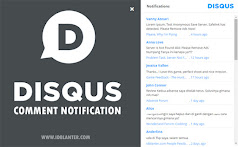In April we announced that we're buying DoubleClick, a leading company in the ad serving business. When we made this announcement, we gave some of our reasons. But because online advertising is complicated, I thought I'd step back a bit and offer some more context. If you're an expert, please bear with me, as some of what follows will seem elementary to those already familiar with the online advertising world. If you're not, I hope this gives you a better understanding of how advertisers, publishers, ad serving companies, agencies and other companies such as Google all fit into this exciting new mix.
A little history
In the earliest years, online ads were simple banner ads on websites. Advertisers would purchase these banner ads for those sites their customers would likely visit. A tire company, for example, would place banner ads on sites for automobile enthusiasts.
An innovation followed: Text-based ads targeted at search. Type “drip irrigation” into a search engine and up pop ads, or “sponsored links,” to gardening service and supply companies. This development made online advertising accessible to small advertisers for the first time. According to a May 2007 IAB (Interactive Advertising Bureau) study called the "Internet Advertising Revenue Report," text-based search ads now account for 40 percent of online ads. Google, Yahoo! and MSN are the leaders in managing this category of text-based ads.The same IAB study notes that display ads account for roughly another 40 percent of online ad sales. Unlike text ads, these may incorporate 3-D graphics, full-motion video, sound and user interactivity. And the remaining 20 percent consists of other categories such as email, classified and lead-generation ads.
Three portals – AOL, Yahoo! and MSN – lead the industry in display ads. Each has more than $1 billion in annual display ad revenue. Content sites such as CNET and ESPN.com are also in the game. Google, however, has been a minor player in display advertising.
Meanwhile, ad serving companies such as DoubleClick, Atlas, and MediaPlex have been helping advertisers get their ads onto these sites and measure how effective the ads are. Since Google has never played in this space, acquiring DoubleClick will enable us to complement our search and content-based advertising capabilities. Its products and technologies will help to improve online advertising for consumers, advertisers and publishers.
By enabling our AdSense network to work with DoubleClick’s delivery mechanisms, for example, advertisers can obtain more precise metrics in order to judge the effectiveness of their campaigns. The combination of the technologies and expertise of Google and DoubleClick will help publishers better monetize their unsold inventory, thus helping to fuel the creation of even more rich and diverse content on the Internet.
What ad serving is
As you might expect, ad serving is the act of serving, or delivering, ads to websites. Google and DoubleClick play different but complementary roles in online advertising. Google primarily sells ads, and DoubleClick delivers (serves) ads. The relationship between Google and DoubleClick is analogous to the relationship between Amazon.com and Federal Express. Amazon.com makes money by selling a book to the consumer. Federal Express makes money by delivering it to the consumer.
For some perspective on the relative size of the ad serving business versus the online ad sales business, some industry estimates put the latter, globally, at about $20-30 billion. According to various eMarketer studies (available by subscription), estimates of ad serving, on the other hand, are many times smaller -- probably 20 times smaller, or even less.
How ad serving works
There are two types of ad-serving products: publisher and advertiser-agency. Publishers use ad-serving products to manage how and when the ads they have sold appear in their websites. For example, will the ad appear on the front page of the site, or on a subsequent page? The process of placing the ad on the appropriate page and in the appropriate size is managed by the publisher’s ad server.
In addition to placing ads in the right location at the right time, ad servers report on the performance of the ads. This is an absolutely vital function. Real-time performance reporting enables advertisers and agencies to change the content, and timing of ads almost on the fly. The value to the advertiser-agency of an ad-serving company such as DoubleClick is having a single place to measure and report on all online campaigns for ads that run on different sites across the web.
How Google and DoubleClick differ
Google makes money primarily by selling text-based ads to advertisers and their agencies. These are displayed on Google.com and partner sites through our AdSense program. We get paid when consumers click on the ads.
DoubleClick is in the ad-serving business and has two primary products. DART for Advertisers is an ad server that gives advertisers/agencies the tools to plan, deliver and report on their online ads. DART for Publishers gives publishers the tools to place ads on their site, optimize them, and assess placement to make the best use of their ad inventory. For the most part, DoubleClick is paid by advertisers and publishers to serve and report on ads. These are two vital and interrelated functions. Allowing agencies and advertisers to deliver ads in the right context and monitor their effectiveness maximizes the return on investment for a given ad or campaign. Ultimately, this leads to better and more relevant ads for the consumer.
Why we're buying DoubleClick
In summary, we're buying DoubleClick because:
- DoubleClick's products and technology are complementary to our search and and content-based text advertising business, and give us new opportunities to improve online advertising for consumers, advertisers and publishers.
- Historically, we've not allowed third parties to serve into Google's AdSense network, which has made it hard for advertisers to get performance metrics. Together, Google and DoubleClick can deliver a more open platform for advertisers, and provide the metrics they need to manage marketing campaigns.
- By combining Google's infrastructure with DoubleClick's knowledge of agencies and publishers, we can create the next generation of more innovative ad serving technology, one that significantly improves the efficiency and effectiveness of online advertising.
- To manage ad inventory, some of the largest publishers use DoubleClick DART for Publishers – but a good portion of it goes unsold. It's our view that the combination of DoubleClick and Google will help these publishers succeed by monetizing their unsold inventory.
Advertisers and agencies will benefit, too. AdSense will support certain ad tags so advertisers will be able to use a broader selection of formats in our ad network, improving ad relevance. And the experience for advertisers will be more efficient, because there will be an ad server that provides consolidated reporting and management of display ads on all properties and networks. More generally, we'll be able to use our technology and record of innovation to improve the quality of existing products in the marketplace. We intend to invest heavily in R&D and product development to respond to the demand from publishers, advertisers and agencies for better tools.
In short, Google’s acquisition of DoubleClick will benefit all parties in the online advertising business, including advertisers, publishers, agencies and, most importantly, consumers.






.jpg)


Warning !!!
=> Mohon memberikan komentar yang sopan dan ramah,
=> YOKO LIEM berhak menghapus komentar spam, komentar yang berisi link, atau komentar yang tidak senonoh,
=> YOKO LIEM sangat menghargai keramahan komentar Anda,
=> YOKO LIEM akan berusaha untuk menanggapi komentar Anda dan mengunjungi balik,
Terima kasih sudah berkunjung ^_^
`````Jika anda tidak belajar mencintai diri sendiri terlebih dahulu anda tidak bisa mencintai orang lain`````